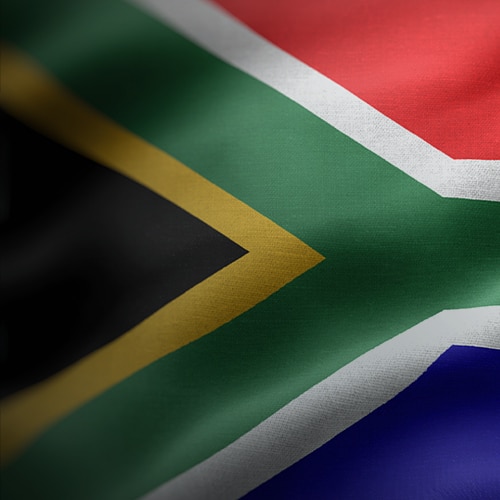Coffee Table Economics (CTE) with Anchor, by Casey Sprake, is distributed periodically. CTE is a compilation of Casey’s research, analysis, and perspectives on key South African (SA) and global economic data, such as inflation, spending trends, and international market dynamics, including socio-political events and the multiple factors shaping the world economy.
Executive summary
In this week’s edition, we highlight the following:
- Anchoring expectations: How inflation perceptions shape economic stability. Inflation expectations influence economic stability and policymaking, with the South African Reserve Bank (SARB) relying on the Bureau for Economic Research (BER) survey to track sentiments from key social groups. In the latest survey, inflation expectations for 2025 were revised downward to 4.3%, while wage growth and economic growth forecasts also softened.
- SARB stands firm: Holding rates steady amid global uncertainty. In line with expectations, the SARB’s Monetary Policy Committee (MPC) decided to keep the repo rate unchanged at 7.5% in its March meeting, with the prime rate remaining at 11%. Looking ahead, the MPC continues to anticipate that interest rates will stabilise at a neutral level of approximately 7.25%. This implies the possibility of a further 25-bp rate cut in 2025 (in addition to the 25-bp cut in January), followed by a prolonged period of stability through 2027.
- Confidence cracks: Consumers reel from tax shocks as business optimism stalls. SA consumer confidence plummeted in 1Q25, with the FNB/BER Consumer Confidence Index (CCI) dropping from -6 to -20, driven by financial pressures and uncertainty over the initially proposed 2% VAT hike. Meanwhile, business confidence remained stable at 45 index points, but sectoral declines (except for a surge in new vehicle dealer sentiment) suggest that the economic recovery seen in late 2024 has stalled.
Anchoring expectations: How inflation perceptions shape economic stability
Inflation expectations play a crucial role in economic stability and policymaking, influencing decisions made by businesses, consumers, and financial markets. Since 2001, the SARB has relied on a quarterly survey conducted by the BER to gauge inflation expectations and other macroeconomic variables. This survey gathers insights from four key social groups: analysts, businesspeople, trade union representatives, and households. Each group offers a unique perspective on inflation, shaped by their respective roles in the economy. Businesspeople influence real-economy prices, analysts drive financial market sentiment, and trade unions and households—mainly through wage negotiations—affect labour costs, a critical component of inflation dynamics.
In 1Q25, survey respondents, on average, revised their forecast for headline consumer inflation in 2025 downward to 4.3% from the previous estimate of 4.5%. They anticipate a gradual rise to 4.7% by 2027, with inflation stabilising at this level over the next five years—slightly above the SARB’s targeted midpoint. Household inflation expectations for the year ahead also dropped to 5.7%, down from 6.6%, marking the lowest level in three years. Wage growth expectations among the three surveyed social groups were also adjusted downward, with salaries projected to rise by 4.5% this year, compared to the previously expected 4.9%, before accelerating to 4.8% in 2026. Meanwhile, economic growth expectations have softened, with respondents forecasting growth of just 1.2% this year (down from 1.5%), followed by a slight improvement to 1.4% in 2026.
The SARB’s MPC closely monitors these survey results as inflation expectations are pivotal in shaping interest rate decisions. When inflation expectations rise significantly and exceed the target range, or other inflation indicators deteriorate, the MPC may take action to prevent inflation from becoming entrenched. Inflation is often described as “self-fulfilling” because expectations about future price increases can influence behaviours—such as businesses raising prices pre-emptively or workers demanding higher wages—that ultimately drive inflation higher. This interconnected cycle underscores the importance of keeping inflation expectations anchored within the central bank’s target range.
The bottom line
By managing inflation expectations effectively, central banks help maintain price stability, which is essential for sustainable economic growth. If expectations remain well-anchored, businesses and consumers can plan with greater confidence, reducing uncertainty in investment and spending decisions. Conversely, if expectations become unanchored, inflation can persist at elevated levels even in the absence of fundamental economic pressures, making it harder to control without drastic policy measures. In this context, the SARB’s ongoing efforts to monitor and shape inflation expectations are critical to its broader mandate to ensure long-term economic stability.
SARB stands firm: Holding rates steady amid global uncertainty
In line with expectations, the SARB’s MPC decided to keep the repo rate unchanged at 7.5% at its March meeting, with the prime rate remaining at 11%. It is worth noting that the decision to hold rates was not unanimous, with four members of the MPC choosing to hold rates steady, while two favoured a cut of 25 bpts. Much like with its January statement, the SARB placed considerable emphasis on the ongoing volatility in the global economic environment. The SARB highlighted several major economies where headline and core inflation remain persistently above the 2% target, reinforcing the expectation that interest rates will likely remain elevated for an extended period despite some anticipated adjustments. While domestic inflation remains contained “for now,” external risks continue to be pronounced.
Regarding economic growth, the SARB revised its 2025 gross domestic product (GDP) growth forecast downward to 1.7%. The medium-term outlook, however, is unchanged, with growth projections of 1.8% in 2026 and 2.0% in 2027. Nevertheless, after maintaining a balanced assessment for some time, the SARB now perceives the risks to growth as tilted to the downside. SARB Governor Lesetja Kganyago reiterated the necessary conditions to enhance economic growth, emphasising the importance of “achieving a prudent public debt level, further strengthening and modernising network industries, reducing administered price inflation, and aligning real wage growth with productivity gains.”
Meanwhile, the inflation outlook was revised slightly lower, with the SARB now expecting inflation to average 3.6% in 2025. However, the central bank noted that this forecast is subject to a higher degree of uncertainty than usual. While the SARB had adopted a highly hawkish stance on inflation risks in January, its near-term outlook has now shifted to acknowledge both upside and downside risks. Despite this, the central bank maintained a strong focus on the medium-term trajectory, repeatedly highlighting that inflation tends to trend higher over time, with potential price pressures building in the third and fourth quarters of 2025. The SARB forecasts an average inflation rate of 4.5% in both 2026 and 2027 and assesses medium-term risks as skewed to the upside.
The bottom line
Looking ahead, the MPC continues to anticipate that interest rates will stabilise at a neutral level of approximately 7.25%. This implies the possibility of a further 25-bp rate cut in 2025 (in addition to the 25-bp cut in January), followed by a prolonged period of stability through 2027. Consequently, the SARB’s latest decision appears to be a temporary pause in the current shallow cutting cycle rather than a definitive end. However, the scope for substantial further easing remains limited.
Confidence cracks: Consumers reel from tax shocks as business optimism stalls
SA consumer confidence plunged in 1Q25 as economic pressures and proposed tax increases weighed heavily on sentiment. The FNB/BER CCI dropped sharply from -6 in 4Q24 to -20 in 1Q25, well below the long-term average of 0. This steep decline reflects deteriorating household financial and economic outlooks, along with diminished confidence in the suitability of the present time to purchase durable goods. The index now sits at its lowest level since 1H23, signalling a significant deterioration in consumer sentiment after a relatively strong end to 2024.
A major factor behind this collapse in confidence was the February Budget announcement, which initially proposed a 2% VAT increase, alongside higher excise duties and only partial relief for tax bracket creep, with no relief for medical aid tax credits. Though this proposal was later revised to a more gradual 0.5% annual VAT increase over two years, the initial announcement created significant uncertainty. Given that the consumer confidence survey was conducted between 24 February and 7 March (i.e., before the revised 0.5% VAT increase), it captures the immediate shock of the original proposal. This uncertainty, combined with financial pressures, has resulted in consumer confidence levels similar to those recorded when SA first experienced Stage-6 loadshedding in early 2023.
Despite three consecutive interest rate cuts between September 2024 and January 2025, the weak consumer confidence reading suggests downside risks to consumer spending growth. While the year began on a relatively strong note—retail sales volumes rose by 1.2% MoM in January, and passenger vehicle sales increased by 5.8% cumulatively from January to February—the sharp drop in confidence suggests a potential pullback in discretionary spending. Consumers appear to be shifting toward more cautious and value-driven spending behaviour, influenced by concerns over future tax burdens and economic uncertainty.
While consumer confidence tumbled, business sentiment remained relatively stable. The RMB/BER Business Confidence Index (BCI) held steady at 45 index points in 1Q25, slightly above its long-term average of 43. However, this overall stability masks a concerning decline in confidence across most sectors. Four out of five sectors saw a drop in sentiment compared to the previous quarter, with new vehicle dealers being the only exception. Their confidence surged by 29 points, offsetting declines in retail, building, manufacturing, and wholesale trade. The business confidence survey, conducted between 5 and 24 February, also reflected external geopolitical uncertainties. Notably, many responses were received shortly after US President Donald Trump announced plans to cut all aid to SA, further straining US-SA trade relations. While this move had little direct impact on the surveyed sectors, it contributed to broader economic concerns. Additionally, some respondents (particularly in manufacturing and construction) expressed worries about ArcelorMittal’s potential closure and weakening domestic demand.
Although business activity indicators remained elevated, the lack of improvement in confidence suggests that the economic recovery seen in the latter half of 2024 may be losing momentum. The previous quarter’s broad-based recovery in confidence reversed in 1Q25, with only new vehicle dealers showing optimism. Retailers and traders still reported confidence levels above their long-term average, but other sectors hovered around historically typical levels. The survey results indicate that while business sentiment has not collapsed, the recovery seen in late 2024 has stalled, and further improvements may be contingent on clearer economic policies and stronger demand conditions.
The bottom line
The sharp drop in consumer confidence and the stagnation in business sentiment suggest that economic momentum could weaken in the coming months. While interest rate cuts may provide some relief, lingering uncertainties around taxation, trade relations, and domestic demand could keep both consumers and businesses cautious. 2Q25 will be crucial in determining whether confidence levels rebound or economic headwinds continue to dampen sentiment and spending.




